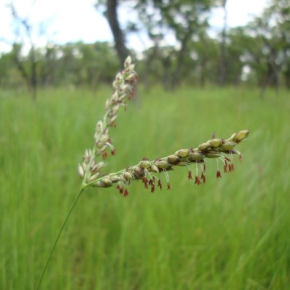
Grasses can acquire genes from neighbouring plants
In plants and animals, natural selection primarily operates on genes passed down from one generation to the next. This paradigm has been challenged, however, by an international team including Guillaume Besnard, CNRS researcher at the “Evolution et diversité biologique” laboratory (CNRS/IRD/Université Toulouse III – Paul Sabatier). Published in the 18 February 2019 edition of Proceedings of the National Academy of Sciences, the study reveals that the genome of Alloteropsis semialata, a grass found in Australia, contains nearly 60 genes acquired from at least nine donor grasses species. Some of these transferred genes code for enzymes involved in photosynthesis, or for proteins involved in disease resistance or soil adaptation. This mechanism, quite common in bacteria, had rarely been observed in plants. From an ecological perspective, these results show that certain plants are capable of adapting relatively quickly to environmental change by using the genes of neighbouring species. While further studies are necessary to understand the phenomenon, it should be considered in efforts to better assess the risks posed by genetically-modified plants, in particular to reduce the possibility of resistance genes being transferred to so-called “weeds”.
Lateral transfers of large DNA fragments spread functional genes among grasses. Luke T. Dunning, Jill K. Olofsson, Christian Parisod, Rimjhim Roy Choudhury, Jose J. Moreno-Villena, Yang Yang, Jacqueline Dionora, W. Paul Quick, Minkyu Park, Jeffrey L. Bennetzen, Guillaume Besnard, Patrik Nosil, Colin P. Osborne, and Pascal-Antoine Christin. Proceedings of the National Academy of Sciences, February 18, 2019.


